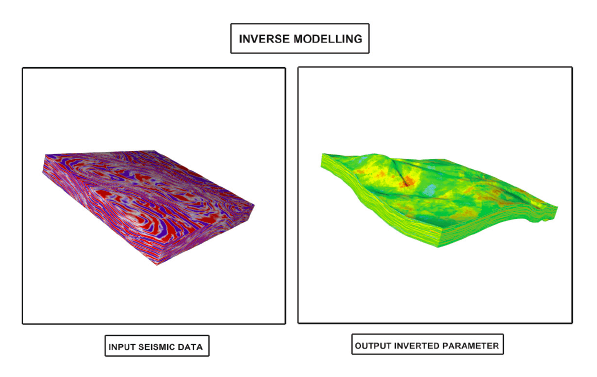Seismic inversion methods is an important tool in the exploration of oil and gas. This technology has come a long way since its inception and has changed the way we search for these resources. Seismic inversion workflow involves the use of seismic data to generate a detailed map of the subsurface, which can then be used to identify potential oil and gas reservoirs. In this blog post, we will explore how seismic inversion has changed the way we explore for oil and gas and what the technology can do for us today.
What Is Seismic Inversion?
Seismic inversion is a process of extracting detailed information about the subsurface of the earth from seismic waves. This process involves analysing and interpreting the data from seismic surveys to provide an understanding of the physical characteristics of the subsurface and to help identify the presence of oil and gas reserves. Seismic inversion works by using algorithms to convert the acoustic data collected by seismic sensors into a map that can be used to identify potential oil and gas reservoirs. This map can then be used to inform exploration activities, such as drilling and production. The resulting information can be used to make more informed decisions about where to drill and how best to access potential reserves. Seismic inversion can also be used to estimate porosity and permeability of reservoirs, which can help in optimizing production and improving reservoir performance.
What Are The Benefits Of Seismic Inversion?
Seismic inversion is a powerful tool for oil and gas exploration. It is used to help interpret data from seismic surveys, which are used to identify potential reservoirs of oil and gas. Seismic inversion can provide detailed information on the physical properties of a subsurface rock formation such as its porosity, permeability, and acoustic impedance. This information is essential for understanding where oil and gas might be found in a particular area and how it can be extracted.
Seismic inversion can also help identify areas of high-quality reservoir rocks and provide an indication of the hydrocarbon content of a formation. This helps to reduce the risk of drilling dry holes or wasting time exploring areas that are unlikely to yield significant amounts of oil or gas.
Another benefit of seismic inversion is that it allows us to accurately model complex subsurface geology. By using seismic data, we can create three-dimensional models that provide insight into the geological structure of a subsurface formation. These models can then be used to optimize the design of wells and production facilities.
Finally, seismic inversion can reduce exploration costs by allowing us to better target areas for drilling. By understanding the subsurface geology, we can more accurately locate areas of potential hydrocarbon resources, thus avoiding wasted exploration effort.
How Has Seismic Inversion Changed The Oil And Gas Industry?
Seismic inversion has revolutionized the way the oil and gas industry explore for resources. It provides more accurate information than traditional seismic methods and enables geoscientists to find potential new reserves faster and more efficiently. With seismic inversion, geologists can create more detailed images of subsurface features. This allows them to identify areas with higher potential for resources, and to map out complex geological structures that are otherwise hard to locate.
Seismic inversion also makes it easier to estimate reservoir characteristics, such as porosity and permeability, which helps geoscientists plan their drilling strategy in advance. This saves time and money since they don’t have to drill in multiple locations to get an accurate understanding of the subsurface. Additionally, seismic inversion can be used to detect hydrocarbon deposits, which allows companies to determine the most cost-effective drilling sites.
Seismic inversion provides geologists with a clearer picture of how their drilling strategies will impact the surrounding environment. This helps ensure that the oil and gas industry operate responsibly, reducing the risk of environmental damage.

Overall, seismic inversion has drastically changed the way the oil and gas industry find and extracts resources. By providing more accurate data and faster results, seismic inversion has made exploration more efficient and economical. It also helps ensure that the industry is operating in a sustainable manner, protecting our planet’s natural resources.
What Are The Challenges Of Seismic Inversion?
Seismic inversion is an incredibly powerful tool for exploring for oil and gas, but it is not without its challenges. One of the biggest issues is that seismic inversion requires a lot of data to work effectively, which can be expensive to acquire. This data can also be difficult to interpret correctly, making it challenging to get an accurate picture of the subsurface. Additionally, there are also limits to the types of information that can be gathered from seismic inversion, as it cannot directly measure things like porosity or permeability.
Additionally, seismic inversion is also computationally intensive, as it requires complex algorithms to process the data. This can make the process slow and costly, especially when dealing with large datasets. Finally, due to the complexity of seismic inversion, it can be difficult to train personnel to operate the technology correctly. As such, personnel must have extensive knowledge in geophysics and be comfortable working with sophisticated software packages.
Despite these challenges, seismic inversion remains an invaluable tool for the oil and gas industry, allowing them to make more informed decisions about their exploration efforts. With technological advancements continuing to improve the process, seismic inversion will no doubt become an even more essential part of the industry in the future.
What Is The Future Of Seismic Inversion?
The future of seismic inversion is looking very promising as the technology continues to evolve. With advancements in machine learning and artificial intelligence, seismic inversion algorithms are becoming more powerful and accurate. In addition, improvements in high-performance computing are allowing for faster and more efficient processing of large datasets. As a result, seismic inversion can now be used to analyse complex subsurface geology with greater accuracy than ever before.
In the years ahead, we can expect to see seismic inversion being increasingly used in oil and gas exploration activities, helping to reduce the time and cost associated with finding new resources. Additionally, the technology has the potential to be used to explore deeper reservoirs and identify low-cost drilling opportunities that would not have been accessible using traditional methods. Finally, with further developments in machine learning, we can look forward to more efficient and reliable results from seismic inversion, allowing us to make more informed decisions about our exploration projects.











